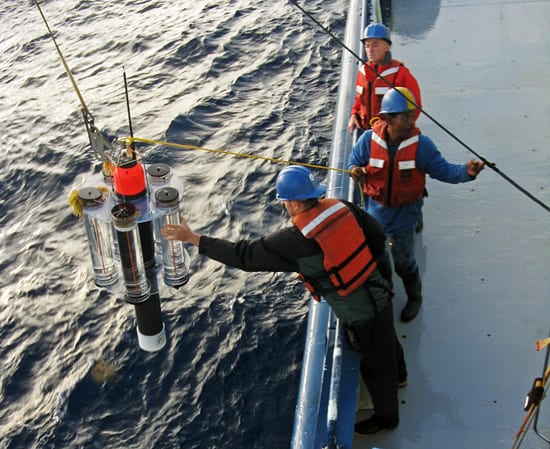Image
Catching ‘snow’ in the ‘twilight zone’
July 12, 2010Clindor Cacho of WHOI (middle), and Brad Issler (left) and Stephen Bell (right) from the Bermuda Institute of Ocean Sciences, recover a Neutrally Buoyant Sediment Trap (NBST) after a mission in the depths of Bermuda in the North Atlantic. The instrument, which was developed by WHOI biogeochemist Ken Buesseler and engineer Jim Valdes, collects “marine snow” — the falling particles of dead phytoplankton and zooplankton feces that sink from sunlit waters into the ocean’s “twilight zone.” Learn more how marine snow can impact climate change from the Oceanus magazine article, “Swimming in the Rain.”
(Photo by Alexander Dorsk, Woods Hole Oceanographic Institution)
Image and Visual Licensing
WHOI copyright digital assets (stills and video) contained on this website can be licensed for non-commercial use upon request and approval. Please contact WHOI Digital Assets at images@whoi.edu or (508) 289-2647.

